
Geologic Time
Geologic Time
Geologic time is so expansive it is difficult to picture, requiring a variety of models to encapsulate events.
Learning Objective: Describe how researchers study early earth, including stratigraphy and geochronology.
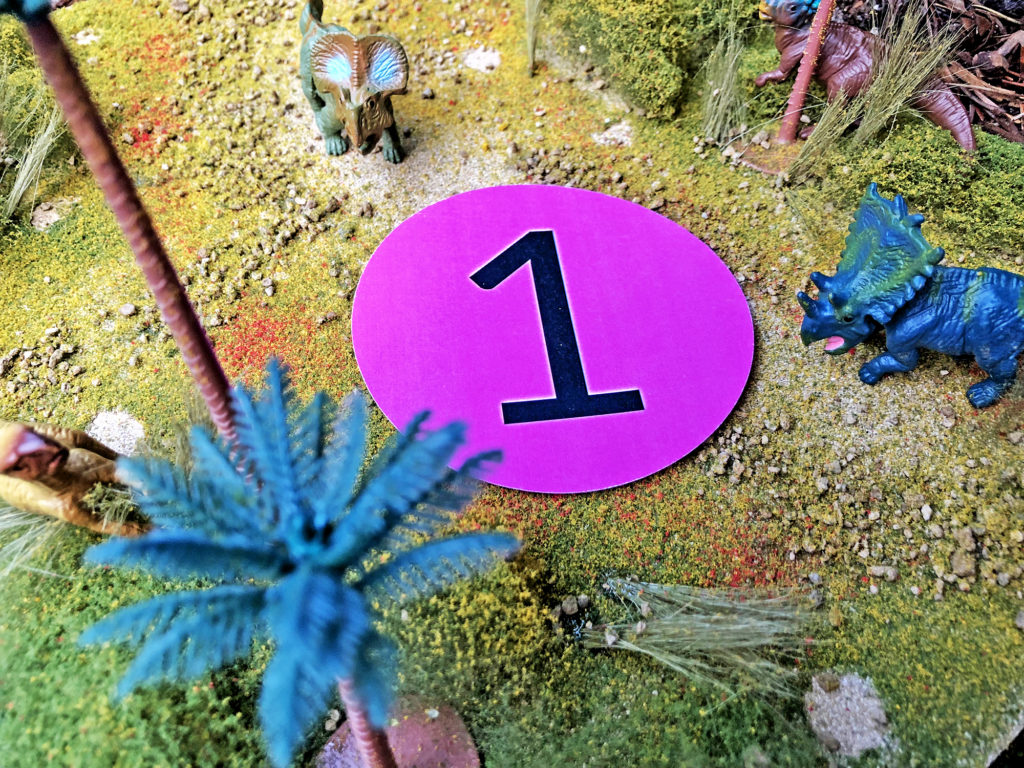
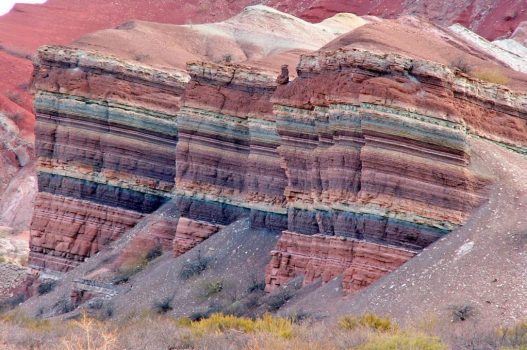
Since humans were not alive for most of Earth’s 4.6 billion year history, different forms of indirect evidence have to be used to piece together early environmental conditions and forms of life.
Stratigraphy is a field in geology related to studying layers of rock, also called strata. Organic and inorganic materials deposit in layers over time, and stratigraphy explains these processes.
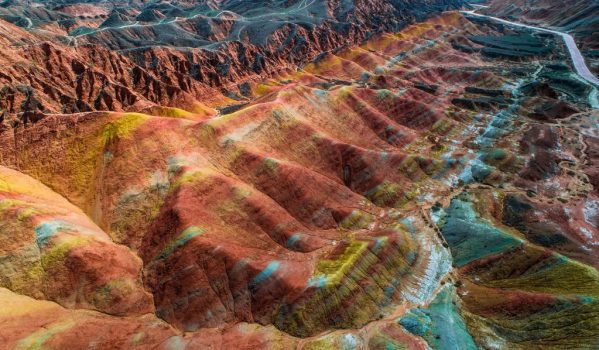
The deepest rock layers are generally the oldest. Earthquakes, floods, and glacial melt can fold and bend the Earth, leaving behind evidence of Earth’s major changes above and below water.
This geological park in Gansu province, China shows long swaths of time and mineral deposition.
Biostratigraphy uses fossils to determine the age range of rock layers. Certain species or groups of species only existed at one point in time, and their presence indicates that general time period. For example, the brachiopod pictured existed approximately 350-415 mya (million years ago).
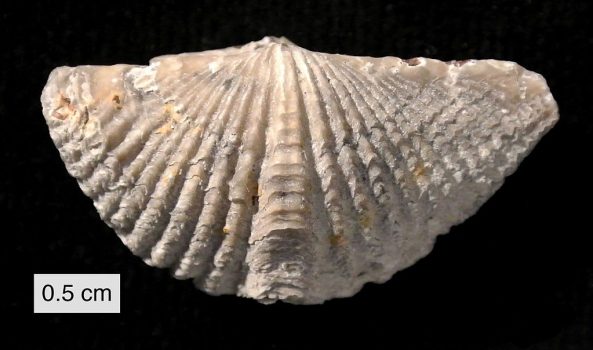
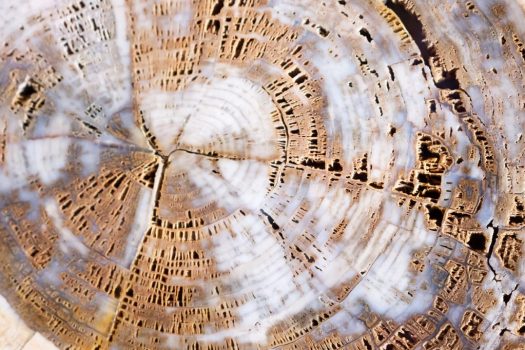
Geochronology is using radioactive isotope measurements to determine the age of sediments and the fossils they contain. Constant radioactive decay rates can be used to establish the age of source materials. There are now dozens of different isotopes used to determine age over different periods of time.
“Geologic Time” is broken into Eons, Eras, and Periods, with some recognizable names like the Jurassic Period.
Watch this video; you can select the closed captioning “cc” option if you would like to see the text.
This video is a scan of the chart without voice. There is an additional look at geologic time in the resource section.
Start Your Media Assignment here
The next two sections of this guide go into more depth on geologic time. Once you complete the sections, construct a timeline that shows the relative lengths of geologic time and representative organisms. This can be paper, digital, or other materials.
Include:
-
The order and relative lengths of the Precambrian Supereon and its three Eons (Hadean, Archaen, Proterozoic) and the Phanaerozoic Eon and its three Eras (Paleozoic, Mesozoic, and Cenozoic.
-
Indications of the approximate time (Eon or Era) when these organisms appear in the fossil record: earliest bacteria, cyanobacteria, eukaryotes (complex single cells), multicellular organisms, the first animals, fish, land plants, reptiles/amphibians, mammals/birds.
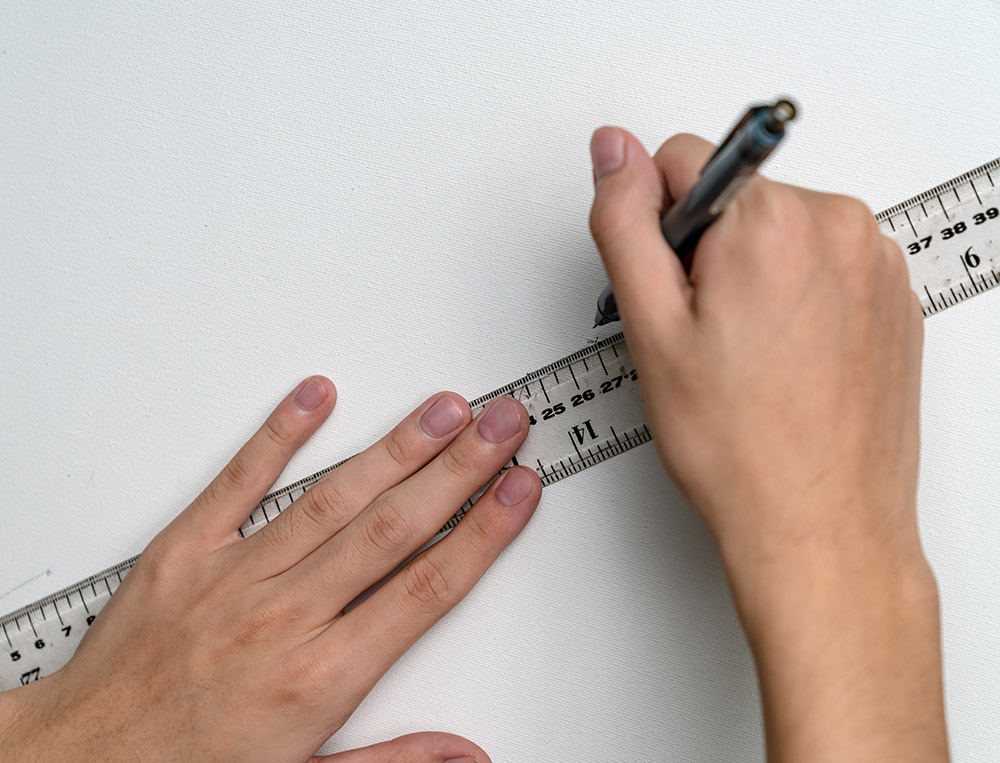
The Precambrian will be very long relative to the Phanerozoic Eon; you may need to have a creative way of looping the timeline. The eras are also different relative lengths.
This can be challenging, but an effective way to learn the order of geologic time. The time spans can be found through Wikipedia and other online sources. Be aware, they often don’t show the relative lengths, many illustrations shorten the Precambrian for convenience.
The next two sections are a tour of four billion years of life on Earth, including the origins of animals.










